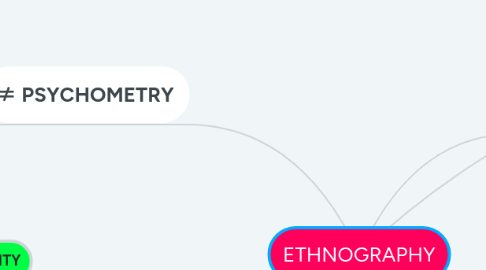
1. ≠ PSYCHOMETRY
1.1. It points out to quantitative research and experimental method
1.1.1. By situations under laboratory settings
2. CRITICISMS
2.1. EXTERNAL RELIABILITY
2.1.1. Refers to the difficulty of replicating the study
2.2. INTERNAL RELIABILITY
2.2.1. Refers to the difficulty of analysing the data (for external people)
2.2.1.1. LeCompte and Goetz propose 4 strategies to avoid the internal validity
2.2.1.1.1. LOW INFERENCE DESCRIPTORS
2.2.1.1.2. USE OF MULTIPLE RESEARCHERS
2.2.1.1.3. PEER EXAMINATION
2.2.1.1.4. MECHANICALLY RECORDED DATA|
3. Ethnography involves the Study of the culture/ characteristics of a group in real world situations instead of laboratory settings
3.1. It points out to the qualitative research
4. DEFINITIONS
4.1. Ethnography focuses the research in real situations and settings (…) rather in laboratory or simulated settings (Watson- Gegeo and Ulichny)
4.2. Ethnography focuses in the cultural description (Van Lier)
4.2.1. WEAK VIEW
4.2.1.1. Observation is unsystematic and unstructured
4.2.2. STRONG VIEW
4.2.2.1. Is a valid paradigm research
5. PRINCIPLES
5.1. There is a data and question Interaction
5.1.1. 1.Data collection 2. Database ( like field notes, transcripts and interviews
5.1.2. Not only description but also interpretation of the information collected in the context
5.2. According to Watson-Gegeo and Ulichny etnhograpic research takes some important elements of
5.2.1. GROUNDED THEORY
5.2.1.1. Explanation of data
5.2.2. HOLISM
5.2.2.1. Has into account the behavior of the participant(s) and the context in which it occurs
5.2.2.1.1. HORIZONTAL
5.2.2.1.2. VERTICAL DIMENSION
5.2.3. THICK EXPLANATION
5.2.3.1. Importance of factors which may have an effect on the phenomena
